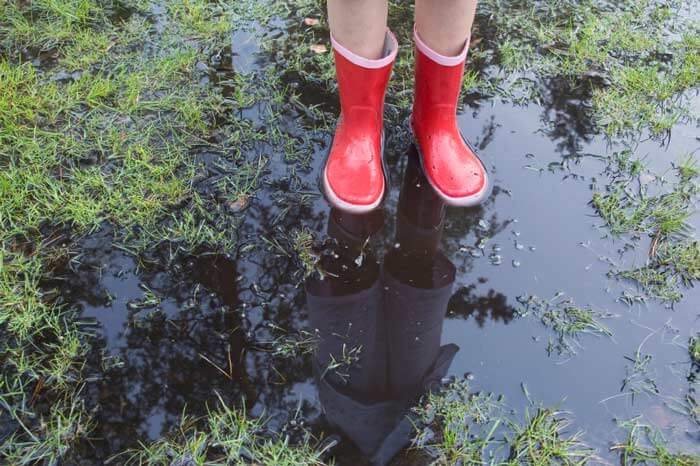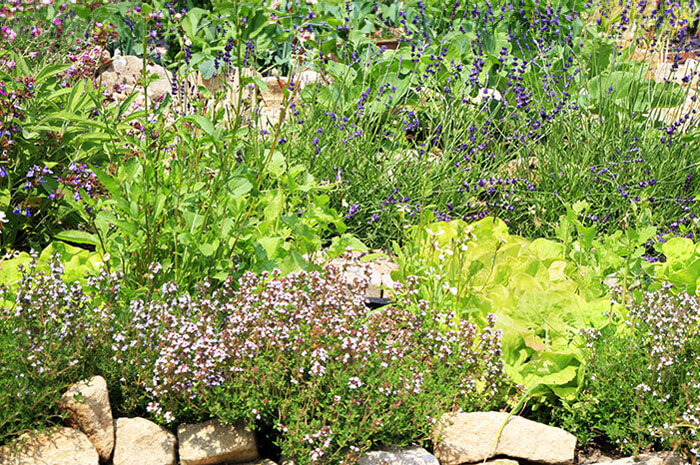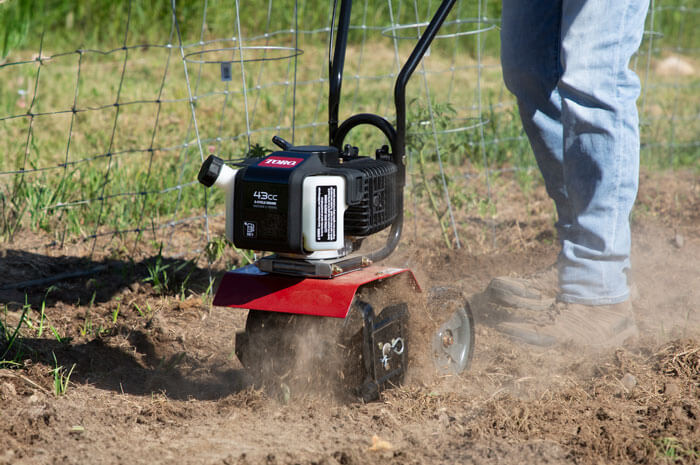
Sometimes Mother Nature can dole out some serious damage to your lawn, ripping through weeks or months of good work in moments. While cleaning up the aftermath of flooding or hurricanes can be disheartening, the good news is that the experts at Toro YardCare can help you restart your yard and bring back your grass as healthy and happy as it was before.
Be patient
If your lawn has been damaged by flooding, patience is the best first step. Wait until the flooding recedes and you can walk on the grass without leaving a noticeable footprint. Walking on a soaked lawn can cause significant damage, not to mention a huge muddy mess.
Clean away debris
Get the big stuff first. If you have really large pieces of debris to remove, such as trees damaged beyond recovery or felled by a storm, contact a local licensed specialist. Otherwise, start with the largest debris and work your way down to the smallest pieces — gather this by raking. Raking will also help remove silt and other deposits that could suffocate any grass that survived flooding.
NOTE: Keep an eye out for downed power lines, broken glass, metal shards, and other potential dangers. Heavy-duty gloves and footwear are recommended during clean-up.
Deal With Remaining Water
If heavy rain has left puddles of standing water behind, it is best to remove them before more damage can occur. Use organic matter like mulch, compost, or topsoil to soak up the moisture. These materials can be raked into the lawn once the water is soaked up, which will help the restarting process by replacing some nutrients that were washed away.
When cleaning up a flooded yard after a hurricane, it’s important to remove the salt by flushing it out with fresh water from your hose. While it may seem odd to use water to help your grass recover after flooding, removing the sodium is necessary to maintain your soil’s pH levels.
Aerate
Flooding can compact your soil, making it difficult for the grass roots to absorb water, oxygen, and necessary nutrients. Aerating while the soil is still moist is okay, but if it is still soaking wet, all you’ll do is spread mud around that you’ll probably have to clean up later.
If you don’t own one, renting a core aerator will save you time and remove large enough plugs of soil to ensure your grass has the space to grow deep, strong roots.
Overseed or reseed
Patience is best for this step as well. Give your lawn a few weeks to recover from flooding and see how it does. If after the recovery period you still notice bare or dead spots, overseed those areas.
For lawns that barely recover any grass or none at all after flooding, it’s probably time to completely restart your lawn by resodding or reseeding. Resodding can be done at any time of year, but if you are going to reseed your lawn, make sure the climate is correct. Cool-season grasses won’t establish well in the heat of summer, while warm-season grasses won’t thrive during the cooler fall and spring months.
[For more information on cool- and warm-season grasses, click here]
Check soil
Once you see new growth, it’s time to check the soil. Flooding and hurricane damage can sap the nutrients your grass needs for strong healthy growth and give weeds a chance to establish. Check your soil’s nutrient levels and pH with a soil test and add the necessary type of fertilizer needed to replenish the nutrients that were stripped away.
Maintenance
Weeds can be a challenge in the best of times, but keeping them from running rampant over a lawn recovering from a flood or hurricane takes commitment. Weeding by hand is the most meticulous method, but using herbicides formulated to knock out weeds are great at preventing widespread takeovers. If you use herbicides, don’t apply if the forecast calls for heavy rain or storms as they will be washed away.
Consider preventive measures
No one wants to restart a lawn every year, so taking some preventative measures can go a long way to keeping your grass healthy despite whatever weather rolls through.
Aerating before storms can help your lawn retain more moisture and reduce standing water and flooding. Leveling any dips or pooling areas can also help with these issues. Adding extra drainage like french drains and channel drains will allow you to better direct excess water away from potential pooling areas.
Altering your landscaping choices can also help prevent damage. Dry creek beds look great and will divert a good deal of water if heavy rain or snow melts threaten to flood your lawn. Simple additions like more mulch or thirsty vegetation can also soak up a good amount of moisture.
Get back to a healthy lawn
No matter how much damage flooding or a hurricane has done, there is a way back for your grass. Often all a yard needs is a little bit of extra care — plus a few expert tips — and your grass will come back stronger and healthier than ever.



